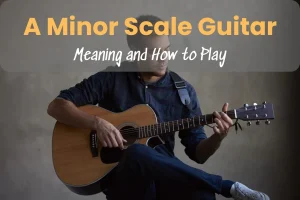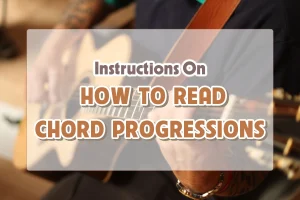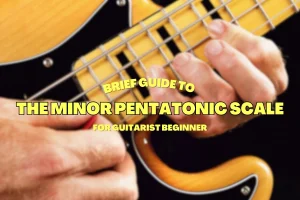
If you are not sure and excited about what you really need to play electric guitar, you’re in the right place. I’ve been there to guide you through everything you’ll need to start rocking out.
To get the full electric guitar experience, you’re definitely going to need an amplifier and a reliable cable to connect your guitar to the amp. Picks are also crucial—they’re like the bridge between you and your strings, influencing how you strike and the sound you create.
And continue reading this blog post, I’ll show you more add-ons that help you play comfortably and keep your gear in top condition.
What Equipment Do I Need To Play Electric Guitar ? (3 Essential Equipment)
When I first got started with my electric guitars, I quickly realized there were three key pieces of equipment you should need: the guitar itself, of course, an amplifier, and a reliable cable. Here’s about my experience with each, and I hope they will be helpful accompany in your musical journey:
Electric guitar
The day I picked out my first electric guitar was unforgettable. Walking into the music store, I was immediately overwhelmed by the choices.
But I remembered, I tried several guitars, each with its own character and feel. Some felt awkward in my hands, while others just didn’t resonate with my musical taste.
But then, I picked up a guitar that just felt right. Its body shape fit comfortably and as I strummed the first chord, I knew. The sound was exactly what I had been looking for—bright and clear, with a warmth that felt like home.
It was a reminder that the best guitar is not only about price or brand, but about how it makes you feel and the connection you share when you play it for the first time. So,
Amplifier
Next was the amplifier, how wrong I was to just consider it as a piece of equipment that was all about volume. I learned that amps could color and shape the tone in different ways.
After trying out several models, I settled on a small tube amp known for its warm, rich tones. So the guitar amp will make your guitar louder; it enhances everything about its sound. This experience taught me the importance of choosing an amp that complements and elevates your guitar’s natural voice.
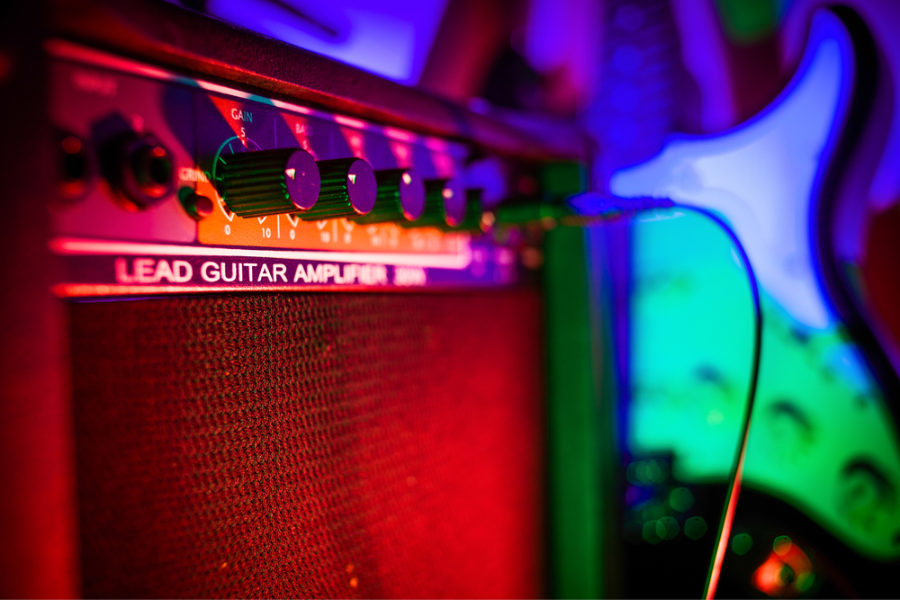
Here’s a trendy twist: plug your guitar into your computer. You’ll need an audio interface or a multi-effects pedal with USB capabilities. This setup opens a world of digital effects and recording options, right at your fingertips. It’s a great space-saving solution and offers endless creative possibilities.
Cable
It’s essential to have a reliable cable as part of your setup, ensuring your music is heard loud and clear. Without a cable, there’s no connection between your guitar and amp (or computer). This means no sound.
A bad cable can degrade your guitar’s signal, leading to a host of sound issues. One of the most common issues is the introduction of unwanted noise and interference into your signal. This can manifest as buzzing, humming, or static sounds that are especially noticeable when you’re not playing. The noise is often due to poor shielding in the cable, which fails to protect the signal from electromagnetic interference from other electronic devices and wiring.
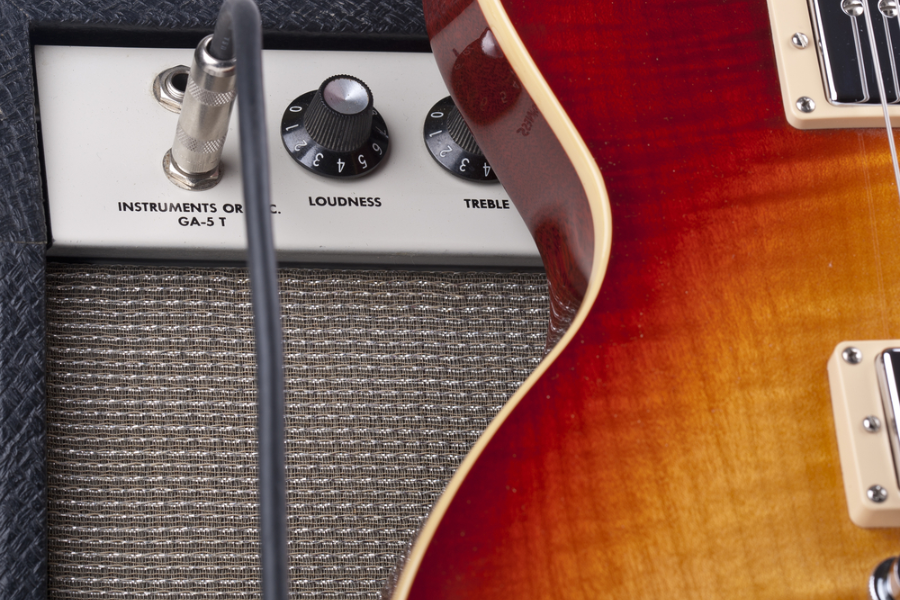
My advice is to stick with cables from trusted brands. They might cost a bit more, but the difference in sound clarity and durability is worth it. A good cable can last years, making it a smart investment for any guitarist.
Essential Accessories for Your Electric Guitar
There are a few accessories that can help you playing your electric guitar better or if you’ve decided to either join a band or form a new one. I want to share with you some essentials that have made my guitar journey smoother and more enjoyable:
Picks
Picking the right pick has been a game-changer for me. I’ve experimented with a wide range—from , from classic celluloid to grip-friendly nylon and even some exotic materials. Each type indeed colors your sound in unique ways:
- Thin Picks: I remember the first time I used a thin pick on my acoustic guitar. The bright, lively sound it produced was perfect for the folk tunes I love playing. Its flexibility felt like it was almost dancing across the strings, ideal for strumming but a bit light for anything more aggressive.
- Heavy Picks: When I shifted to playing more electric guitar, especially solos, the thick picks became my go-to. The control and warm, beefy tones they helped me produce made my solos feel more potent, more present.
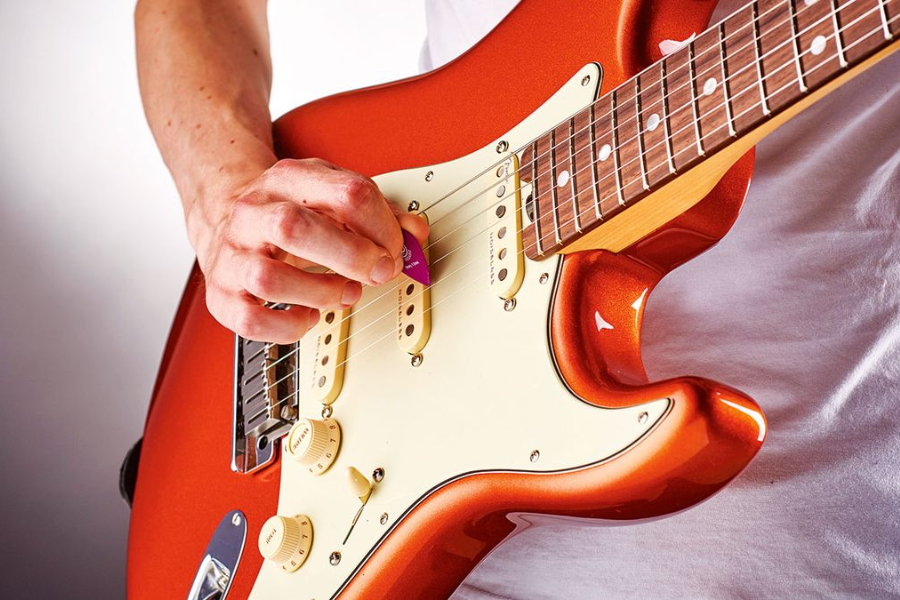
Through all this, I learned that the style of music you play might heavily influence your pick choice. It’s all about matching the pick to the vibe you’re aiming for.
Tuner
In my early days, I used a basic clip-on tuner—a, the no-frills tool that was a lifesaver. It kept my guitar sounding sweet and harmonious, which is crucial because, let’s face it, an out-of-tune guitar can make even beautiful melodies sound sour.
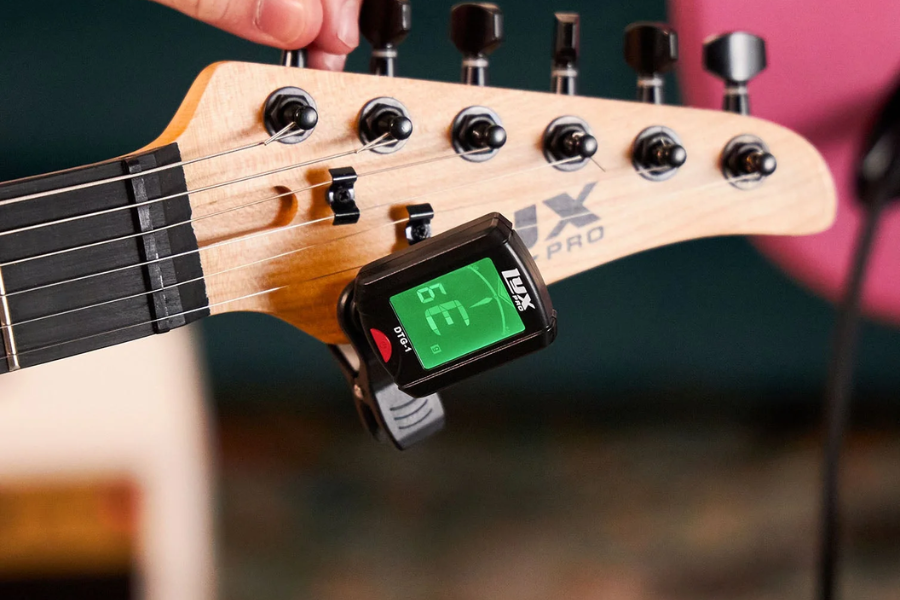
These days, I often turn to tuner apps on my phone. They’re incredibly convenient for a quick tune-up anywhere, anytime. Plus, being free is a nice bonus. Whether you’re a beginner or a seasoned player, keeping your guitar in tune is fundamental.
Strings
The strings on your guitar can truly make or break your sound. I’ve always been keen on swapping out the factory strings for something a bit more special. Ernie Ball for their resilience and bright tone, and Elixir for their longevity and smooth feel.
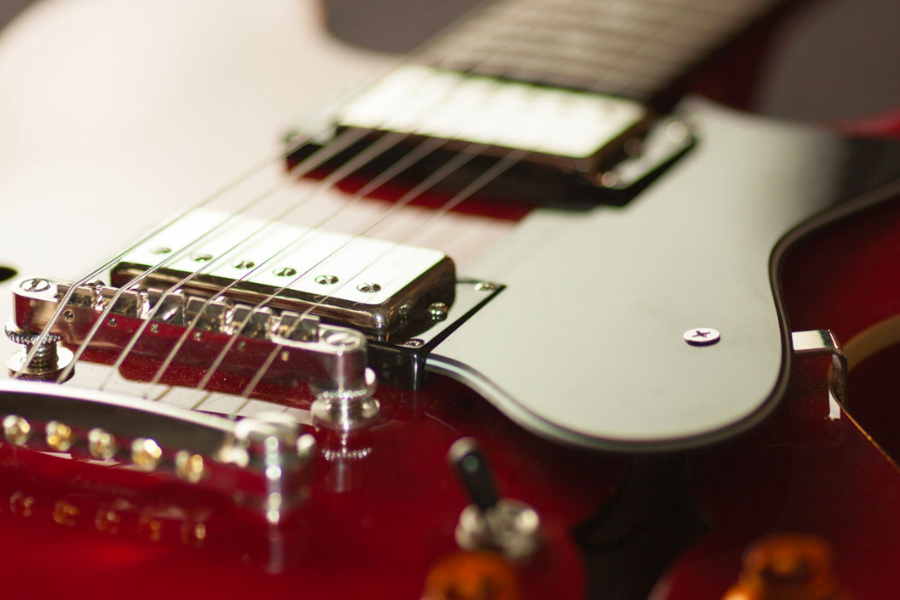
Changing strings not only improved my sound but also taught me the ins and outs of my instrument. And believe me, when you’re in the middle of a gig and a string snaps, knowing how to swiftly replace it is a skill you’ll be thankful for.
Straps
The right strap can make playing for hours feel effortless. I’ve gone through a variety of straps over the years, from sleek leather to durable nylon. Each material offers a different feel and aesthetic, but for me, adjustability and strength are key.

An adjustable strap lets you dial at just the right height and comfort level, which is vital for those long practice sessions or gigs. And investing in a quality strap means not worrying about wear and tear—it’s about securing your prized guitar safely over your shoulder, ready to rock.
Optional considerations for enhancing The Electric Guitar Experience
We usually focus on the guitar itself, the amp, and maybe a little cool equipment. The idea of these equipment below seemed secondary—until I actually started playing regularly. Here’s what I’ve learned about these crucial accessories:
Stand
I’ll admit, I didn’t see the need for a guitar stand right away. But after a couple of close calls with my guitar nearly taking a dive off a makeshift resting spot, I quickly saw the light. A guitar stand keeps your guitar safe, stable, and ready to play at a moment’s notice.
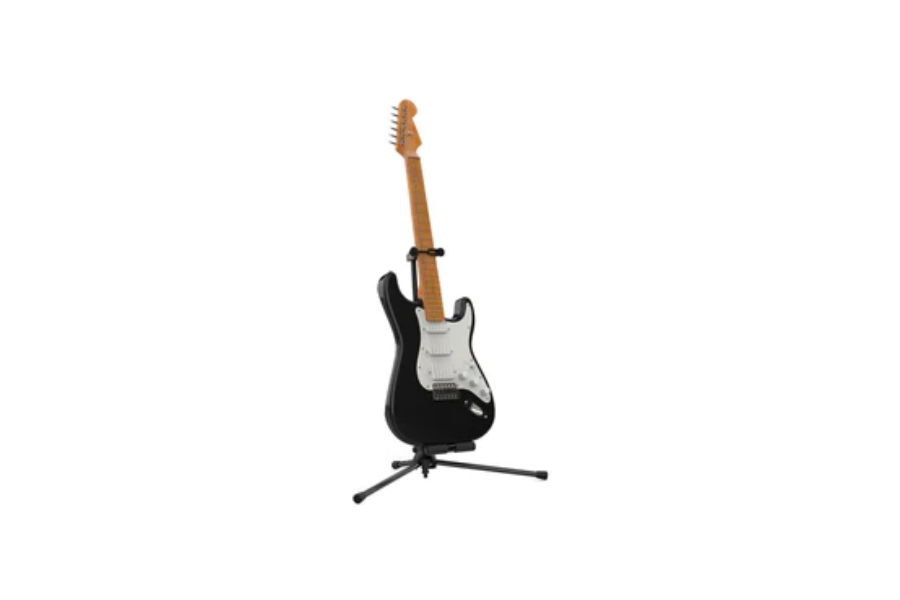
But here’s the kicker—it also encourages more practice. Seeing my guitar standing there always tempts me to grab it and play a few notes or dive into a practice session. It’s a simple psychological trick, but it works wonders for consistent practice. Moreover, it’s a great way to display your guitar in your room, turning it into a piece of art that’s always ready to sing.
Case
As for the case, I thought a soft gig bag would do the trick for my local travels. It was only after I picked up my guitar to find a new nick from a trip that I realized the true worth of a hardshell case. A good guitar case is like a fortress for your guitar, shielding it from bumps, scratches, and unpredictable weather.
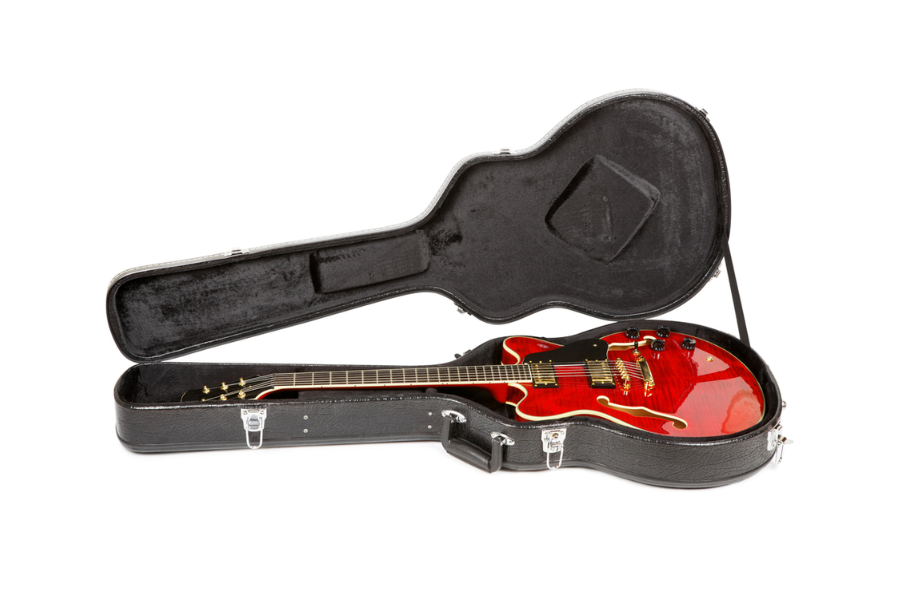
But it’s not just about protection. My case has become my mobile guitar hub. It’s where I store spare strings, picks, a tuner, and even sheet music. Whether I’m heading to a rehearsal or a gig, I know I’ve got everything I need in one spot. Choosing the right case—a hardshell for heavy travel or a padded gig bag for lighter commutes—depends on your lifestyle, but either way, it’s an investment in your guitar’s longevity and your peace of mind.
Effect pedals
Diving into the world of effect pedals was like opening a door to an entirely new dimension of guitar playing for me. Each pedal, with its unique capabilities, allowed me to sculpt and fine-tune my sound in ways I had only imagined. From the lush landscapes of reverb to the gritty textures of distortion, pedals became my passport to sonic exploration.
But with great power comes great responsibility—specifically, the responsibility of managing an ever-growing collection. I learned early on that a pedalboard transformed my tangled mess of cables and pedals into a streamlined, easy-to-navigate command center. This organization was more than just aesthetic; it meant that during a live set, I could switch between sounds fluidly, without losing my place or breaking the spell of the music.
Metronome
I’ll be honest, I was skeptical at first. I thought metronomes were strictly for classical pianists or the rigor of music theory classes. But incorporating a metronome into my practice sessions was a humbling and transformative experience. It didn’t matter if I was working through a lightning-fast solo or a delicate, rhythmic strumming pattern; the metronome kept me anchored, consistent, and honest about my timing.
Practicing with a metronome was like having a personal rhythm coach, quietly ensuring that every note I played was in perfect time. It taught me that rhythm and timing are the backbone of great music. They’re what make a performance feel tight and professional, no matter the genre. And believe it or not, training with a metronome has made playing more intuitive and freeing, because once you internalize that steady beat, your music can truly breathe.
Capo
For those who might be new to this, a capo is a clamp you can place across the fretboard of your electric guitar at any fret you choose. Instantly, it shifts the pitch of the guitar, allowing you to play in different keys without altering your finger positioning.
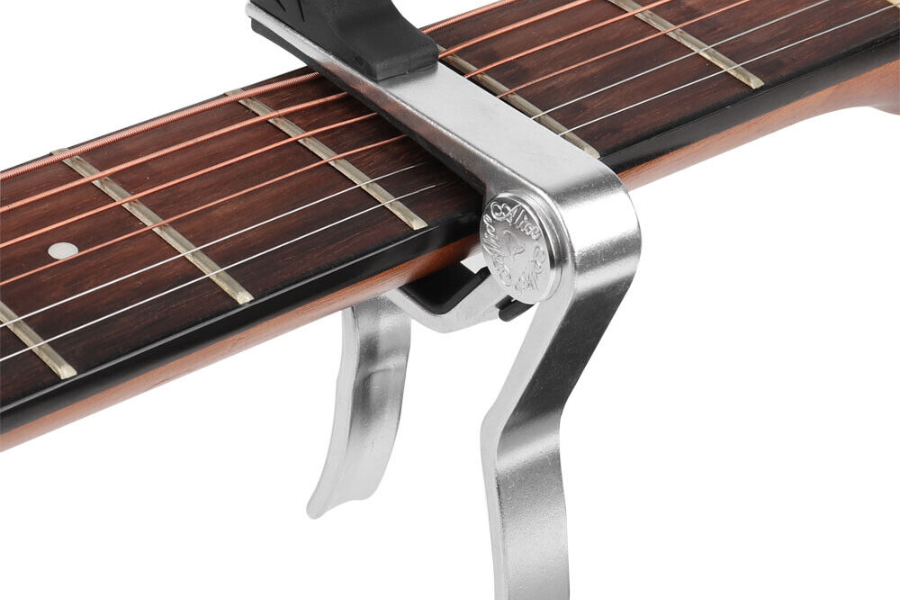
With the capo, I could easily shift the key, making it possible to sing comfortably without having to relearn the chord shapes in a new key. But soon, I discovered it was more than just a convenience tool; it was a vessel for creativity.
Using a capo transformed familiar chords into something new and fresh to my ears. It encouraged me to explore parts of the fretboard I’d neglected, pushing my creativity and songwriting in exciting directions. I found myself experimenting with textures and sounds that had previously been out of reach, all thanks to this simple tool.
My advice is to experiment freely. Place it on different frets and play songs you’re familiar with. Notice how the change in key inspires different vocal melodies or leads you to improvise in new ways. The capo is not just for acoustic guitarists or singers; it’s a powerful tool for any electric guitarist looking to expand their musical vocabulary.
Maintenance Tools for Your Electric Guitar
You might be thinking, “Are these tools really essential?” For me, the answer is absolutely yes. The string winder and cutter combo has saved me time and frustration, making string changes something I no longer dread. And proper cleaning has preserved the look and feel of my guitar, making each performance not just sound good, but look good too.
String Winder and Cutter
Changing strings used to be my least favorite part of guitar maintenance. That was until I got my hands on a string winder and cutter. This tool revolutionized the way I approach string changes. What used to be a tedious, finger-cramping task became quick and effortless. The winder part speeds up the process of tightening new strings, while the built-in cutter trims the excess string in a snap. No more reaching for separate tools or dealing with poking wire ends.
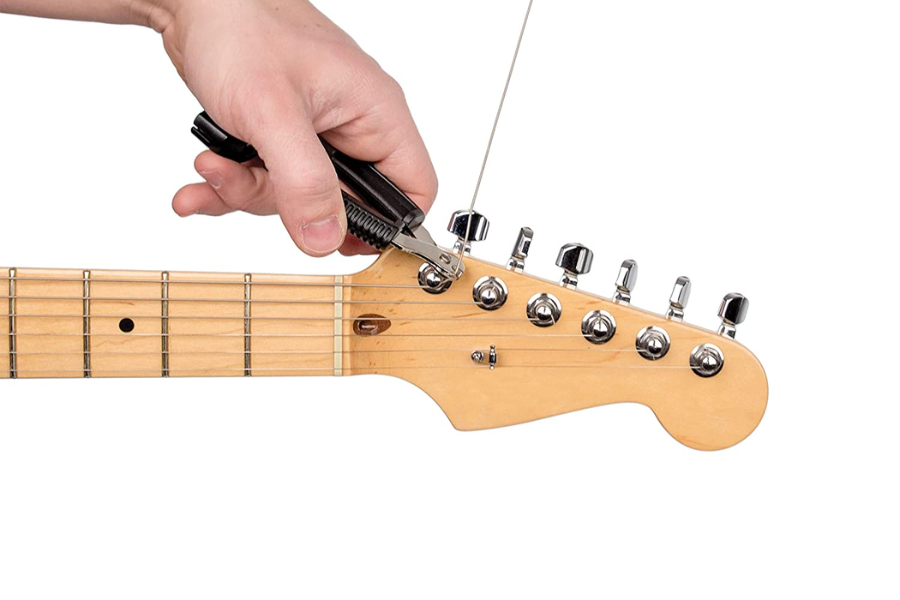
It turned a panic-inducing string snap during soundcheck into a minor hiccup. Since then, it’s been a constant in my guitar case, ensuring I’m always ready, whether at home, in the studio, or on stage.
Cleaning Cloth and Products
A shift to a microfiber cloth specifically designed for guitars made a huge difference. It effortlessly picks up dust and oil without leaving any scratches, preserving the finish of my guitar.
Pairing the cloth with specially formulated cleaning products has kept my guitar not just looking great but feeling great under my fingers. Regularly wiping down the body and treating the fretboard keeps the wood in good condition and improves overall playability. It’s a simple step that enhances the experience for both you and I when we play the electric guitar.
Final thoughts on what I need to play electric guitar
I hope you have a better idea of what things you need to play with your electric guitar. The main point is that you don’t need to buy all this equipment ; you just need to get the right ones that fit your aim.
Get the things you need first, and then jump right into playing. The magic happens when you start playing, not while you’re looking for gear for hours on end. Get your guitar out, plug it in, and start playing with all the essential equipment.

